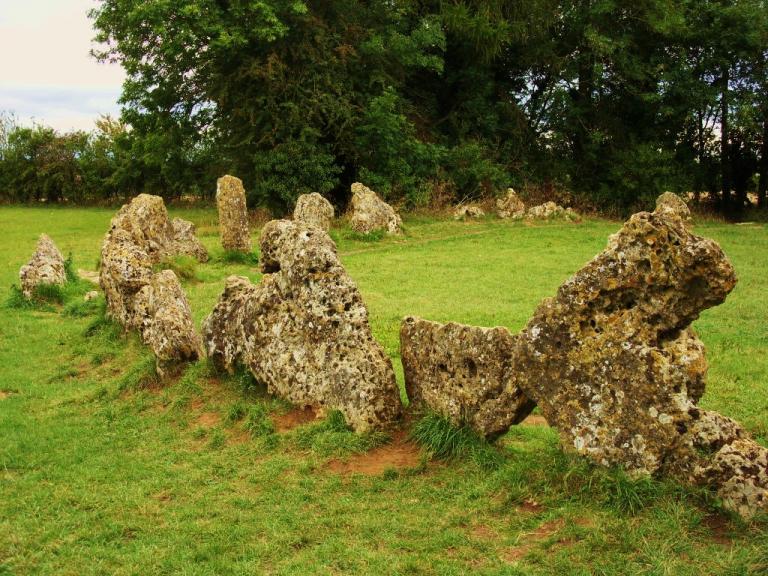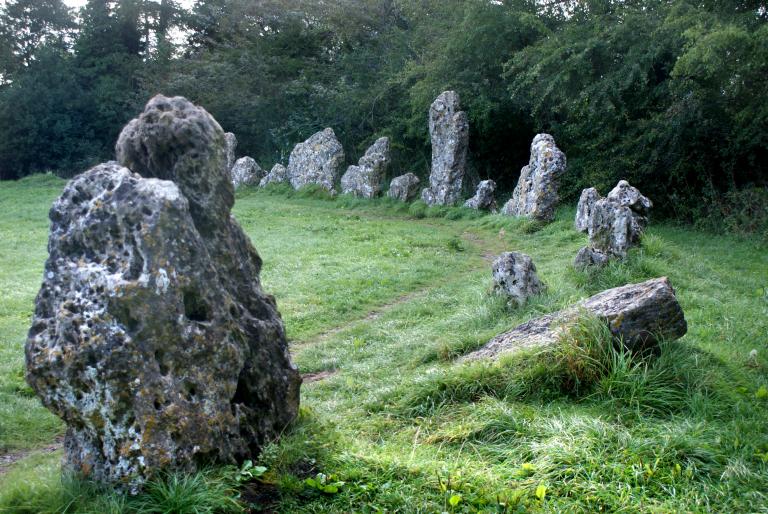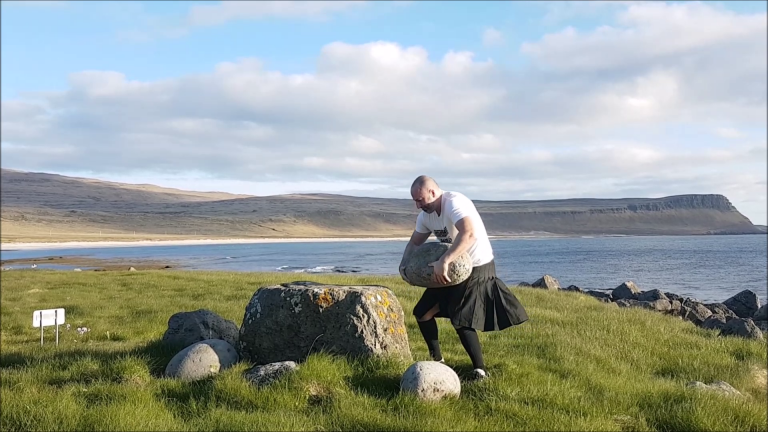Grassland Stone Man
8 min readThe grassland stone men, a big historical and cultural landscape on Xinjiang grassland, are the vivid portraits carved mainly with stones, which are buried with the dead or served as quardians before the tomb facing the eastdirection-where the sun rises and where the life consciousness and strength could be revived.

The grassland stone men are distributed not only in the Xinjiang Uyghur Autonomous Region of China, but also in the entire Asia and Europe grasslands. Currently, over 200 stone men discovered in Xinjiang are mainly distributed in 10 regions and prefectures such as the altai Mountains, MtTianshan, Ili Kazak Autonomous Prefecture of Mountain West Junggar, AltayRegion, tuscaloosa Region and boertala mongol autonomous prefecture, even the Kumul of eastern Xinjiang. The altay region is the richest area with grassland tomb stone men in Xinjiang and over 80 stone men have been discovered here, the highest one of which is generally designed with a height of 3. 1m and the height above the ground of 2.7m and the shortest one of which is designed with a height above the ground of 0.6m. Through the archaeology studies, the tomb stone men had been made since the bronze age n altay Region including two types, Samut Stone Men and Kayi Naer StoneMen. The most typical type of Samute Stone Men is the Samute Tomb Stone Men of Qinghe County, which only focused on expressing face organs, round face and round eyes with a triangular nose of wide alar part and smoothcutting bottom, a distinct cheek bone and a big mouth However, the most typical type of Kayi Naer Stone Men is the Kayi Naer tomb stone men in Qiekeer kexiang of altay city some of which were carved out not only the face but also the arms. The stone men are obviously stylized and lack of realism They were carved with round or peach-shaped face, round eyes, square straight nose, small mouth and triangular patterns on shoulder and chest According to the research the Bronze Age Stone Men in Altay Region are closely associated with the culture of Ghost States”people recorded in Chinese history.

The Iron Age Tomb Stone Men discovered in the altay region are carved with four types, mainly including Kala Tasi, Qiemuer Qieke No. 10 and No. 11 Stone Men, Alepa Braque and talede braque The east of Kala Tasi tombs are placed with two parallel male and female stone men, both facing the east and only the faces carved out. The left male stone man was carved through cutting bottom method to express facial profile with a big mouth, straight nose and smooth cutting bottom. the right female stone man was carved through embossment to show facial profile with a small mouth and small eyes. From cultural tracing considerations, the stone men of altay region during this period can be linked to its Iron Age cultures, which shall belong to rongdi Culture series thus it can be deemed as one cultural phenomenon of Dinglinger People, and also it may belong to the culture of Hujie People. They are mainly distributed in the altay grassland and the Zhaosu Grassland of ili Judging by shapes, the grassland stone men of Xinjiang are carved with whole rocks, most of which are full-length portrait with vivid head, face and body. The Aer Xiati stone Men discovered in the Aer Xiati grassland inWenquan County of boertala Mongolian Autonomous Prefecture were carved with the whole white sandstone. the head of fer xiati was carved with a wide and round face, a pair of protuberant and long eyes high cheekbone and two hanlebars on the upper lip meanwhile the body was carved with big lapel qipan, wide belt on the waist, right hand holding a cup in front of the chest and left hand pressing one sword on the waist; its feet were carved with a pair of leather boots the serious facial expression of the stone men looks like a mighty soldier defending and patrolling the surrounding grassland The Xinjiang Grassland Stone Men are firstly discovered by a Chinese med Xusong. He was a traveler at the end of Qing dynasty, had recorded the experience of discovering stone men along the west of Xinjiang Ili river in The records of streams in Western Regions and doubted that it might be the funerary objects of ancient soldiers, just like the Stone Wengzhong in front of Zhaoling mausoleum of Tang Dynasty.
Wengzhong was the legendary giant, who had been recorded in huainanzi Silun that on the twenty-six Years of Fisrt Emperor of Qin, there was a giant in Lintao County with a height around 16. 5m and feet of 2m. People carved a statue with bronze according to his image and named it Wengzhong. Later, the bronze statues or tomb stones were all called as Wengzhong by people Ar. Huang Wenbi, a famous archaeologist in China, found several stone men during his inspection in IIi of Xinjiang in the 1950s. After a preliminary study, he firstly presented the idea that the Xinjiang grassland stone men were Turkic peoples. Turkic was founded in the mid-sixth century AD and destroyed in the mid-ninth century, lasting more than 280 years. The warrior-type stone men discovered in the Kazakhstan of Central Asia, Turkmenistan, mongolia and Xinjiang province in China are the only historical evidence left on the grassland of turkic Khanates.
Archaeologists generally believed that Xinjiang Stone Men originated inaround 1200 BC. In the 14 century, before Islam entering grassland, the grassland people had always believed in an ancient mystery religionShamanism. Shamanism was a kind of original polytheism dominated by ancestor worship which originated from the late primitive society and in China, the Huns, Turks, Sushen, Khitan, Mongolia and many other ancient peoplesonce believed in Shamanism. Shamanism believed in animist and worshipped nature, the most prominent feature of which is the ancestor worship. They believed that the person’s soul was still long-lasting after death. Despite that their ancestors who had passed away their souls were always together with the living people. Xinjiang grassland stone Men and deer stone is an expressional form of shamanism, not only representing the hero worship, but also the ancestor worship.
However, some people believe that those tall pillars, deer stones, including tone people are the symbols of male reproductive worship. Reproductive worship began from the late matriarchal society. Reproductive worship of western ancestors was mostly expressed in early human rock paintings, sculpture, funerary objects and ancient legendsre, Male reproductive worship began from the patriarchal society which laced the female reproductive worship gradually, indicating that in the grasslands at that time, men occupied the leading status in resisting foreign invasion, nomadic hunting and social life. Male genitalia symbolized power, dignity, fertility and prosperity.
Later, the original reproductive worship gradually evolved into ancestor worship. Ancestor worship of western ancient people concentrated expressions in the funeral ceremony and ritual. Judging from the evolution of Xinjiang grassland tomb stone men, we could also see that male and female ancestor worship of the people living in the grasslands co-exist in the Bronze Age. While by the Sui and Tang dynasties, female stone men were never seen and no female stone men were found in the carved warrior-type stone men of Turkic People.
The culture and art of different nationalities, different regions and different times are reflected in the specific images of grassland stone mens appearance, clothing, and implements. Since the Eastern Zhou Dynasty, from the Western Han Dynasty, Sui, Tang Dynasty to the late Qing Dynasty, the imperial tombs and the generals and ministers’ mausoleum were all following the custom of placing the stone men and stone animal as shinto to be the most respectable one among the emperor’s mausoleums disposedly and prominently.
The stone portraits on the agonggaiti grassland were all carved with the entire rocks. Looking at the outside, some were carved as full-length portrait with vivid head face and body in crisp lines Some were carved with countable jewelry pieces with delicate modeling; while some were merely carved with several shallow thin lines, roughly showing the profile of the face. the tallest stone portrait here is more than three meters and the shortest one is sixty or seventy centimeters with round collar of the costumes, a circular belllike object on both left and right sides in front of the chest and serrated shape reliefobject at the joints of the collar. There is one stone man carved with round face and eye, square straight nose, small mouth and triangular patterns in front of the chest and there is another warrior stone man carved with one sword on the left hand, right hand with the action of holding cup, fine-carved belt, circular pouch at the right side and the handlebar mustache, presenting both majesty and grace.
The warrior-type stone human statues accounts for the most distribution on grasslands in Xinjiang. The warrior-type stone human statues are characterized in obvious individual face and a belt buckle with a waistband is carved on the waist, a knife hung on the waist, and a weapon, cup or bowl and other items held in hand and moreover there are also some female stone men.
The period from the middle 6th century to the 9th century was a prosperous time of the grassland stone men, and grassland stone men were distributed quite widely. the most representative one is the Josiah -type stone men The Josiah-type stone men are the typical warrior-type stone human statues. Most statues are circular sculptures depicting the head the neck and the shoulder, the two arms and the clothing and carving mustaches. The right hand is in a shape of supporting the cup or holding the cup, and the left handis in a shape of holding the knife or a sword. The waistband is carved finely and circular bags or knife grinders are usually hung on the right side under the band. a dagger is usually obliquely put on the hypogastrium, and most of the daggers are in a transverse arrangement shape meanwhile a long knife is generally obliquely arranged Some stone men were decorated with both the dagger and the long knife to present the image of a great general. The stonemen during this period mainly are Tujue stone men. As recorded in historical records, when the Tujue Kul Tigin died, the dynasty of the central China ordered the general Quyi Zhang and the official Xiang Lv to take along with royal seal edict to go to tujue to offer libation as well as set up a monument carving words on the monument; meanwhile build a temple carve the image on the stone and carve the scene of battle array on the wall around. Theseevents had been confirmed by archaeological materials in the mongolia area At the same time these events also showed that setting the stone men in graveyards indicated the meaning of worshipping the ancestors in the tujuenationality. Xiaohongnahai stone men in Zhaosu County of lli belong to the tomb stone men of the tujue nomadic nation in the sui and tang dynasties The stone men are 230cm high with the head width of 35cm and the body width of 50cm, standing with facing the east and holding hands in front of the chest. The right hand seems to hold sulfur or a small cup the hair is braided nto multiple strands. Ancient ethnic characters are carved on the waist by taking advantage of the primitive and simple carving technique.
The grassland stone men are representative grassland relics left by the nomadic ancestors on the Eurasian steppe which preserves great importance in studying the ancient grassland nationality culture.









